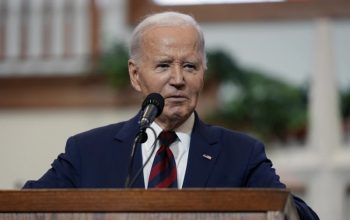news
“Trump’s Victory”, an article by Dr. Leonel Fernández
November 12, 2024
He had been the target of two impeachment proceedings. He was under investigation for his ties to the assault on the Capitol. He was convicted on 34 felony counts. He was accused of tax fraud and of stealing classified national security documents.
So, how is it possible that, amid so many adversities, Donald Trump could have achieved such a crushing electoral victory over Kamala Harris, his Democratic Party opponent?
In 2016, when he first ran for president as the Republican Party candidate against Hillary Clinton very few people believed, including me, that he could win. However, given his long-time career in the world of entertainment and advertising, it was understood that this was nothing more than another ploy to maintain his presence in the center of public opinion.
But the unexpected happened. Following Donald Trump’s victory several theories were put forward. One, for example, indicated that Russia had hacked the elections in his favor. This disinformation strategy came from Cambridge Analytica, as well as a criminal accusation put forth by FBI Director James Comey against the Democratic candidate, just one week before the electoral tournament.
During the campaign, candidate Donald Trump’s behavior was petulant, rude and condescending. It was part of a rhetorical style that has strengthened over time, contributing to a greater polarization and division of American society.
His style, transmitted to his followers through sectarian behavior, provoked Hillary Clinton – in the midst of the heated ambience generated by the campaign – to describe Trump supporters as deplorable.
Reasons for this Phenomenon
But were Trump supporters really deplorable?
Over time, it has become clear that the defeat experienced by the Democratic Party in 2016 – with Hillary’s candidacy, and now in 2024, with Kamala Harris – has been generated by the profound economic, social, technological and cultural transformations that have taken place in the United States since the 1980s.
Indeed, since then, the mighty nation of the North experienced a process of deregulation of the financial sector, going from an industrial transition to a service economy and the intensive use of technology.
This transformation severely impacted the middle class and the white working class of the United States, who saw their incomes reduced and their jobs eliminated, while the large corporations and the upper and professional sectors of society increased their profits exponentially.
With all of this going on, which was generated by the phenomenon of globalization and the change from the Keynesian economic model, with greater State participation, to one where the market was supreme, or neoliberal, increased social inequality to unprecedented levels and widened the gap between the rich and poor in American society.
In neoliberal globalization, with free-trade agreements and supply chains, which incorporated, among others, the textile, footwear, automobile, appliance and pharmaceutical industries, the dissatisfaction and anger of the white American working class grew, which felt abandoned by Washington politicians and scorned by Wall Street and large transnational corporations.
Cities with a strong manufacturing tradition were devastated. In Cleveland, Detroit, Pittsburgh, Ohio and Georgia, many other regions, resembled ghost towns. Buildings which had once housed tens of thousands of workers, were now shut down.
But in the face of the obvious industrial decline going on in the United States, the profits of the financial and corporate elites who had relocated abroad to send their exports back to the North American market were multiplying. All this was further aggravated by the Great Recession and the economic impact generated by the Covid-19 pandemic, which caused an increase in the cost of living, and fueled anxiety and uncertainty in large sectors of the American population.
Trump 2.0
Trump was not the first to highlight the situation American society was experiencing. Since the 1990s, conservative figures such as Ross Perot and Pat Buchanan had echoed the social imbalance that was destroying the heart of American society.
But it was Donald Trump, advised by his Consiglieri Roger Stone, who perhaps appealing to what historian Richard Hofstadter has called “the paranoid style of American politics” – with his strident and noisy manner – began to attract the attention of those sectors that felt they had lost a voice that could expose their precarious situation.
Furthermore, it was he who began to refer angrily to the problems generated by illegal immigration in the United States. His discourse connected emotionally with those sectors that considered this to be one of the country’s major problems.
The now president-elect put these accusations into context in order to develop a strategy of confrontation with the so-called American Establishment, blaming the immigrants for the decadence of American society.
He also opposed positive social policies, such as Affirmative Action policies, in favor of minority groups, be they racial, ethnic or gender. This is one of the reasons he was perceived to be a racist, misogynist and a xenophobe.
For some, Trump’s stance, that of a millionaire businessman, producer and media celebrity, were nothing more than a form of populism. For others, they were pure demagoguery.
Faced with the restrictions he encountered in conventional media, he created his own media ecosystem, with a network that included social platforms, podcasts, blogs and YouTube programs.
In the end, he overcame the many obstacles that were scattered along his path. He cultivated a mystical aura of invincibility; and it was all captured in the now historic photograph depicting Trump’s bloody face with the American flag waving behind him. With a raised arm, he shouted: “Fight, fight!”
American society had changed. But the Democrats failed to recognize this in time. It was this way that Trump hopped on the wave to become the central axis of his electoral victory.





